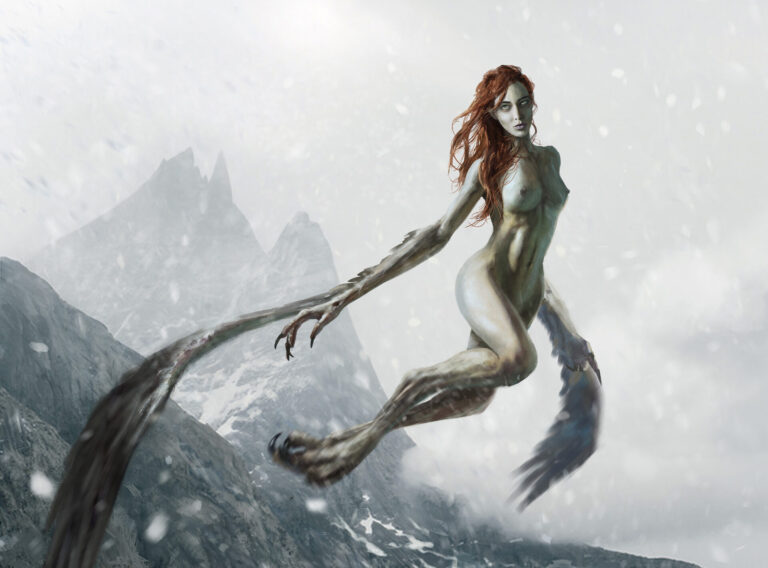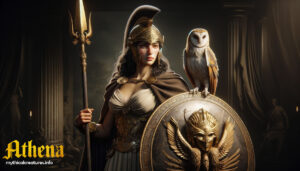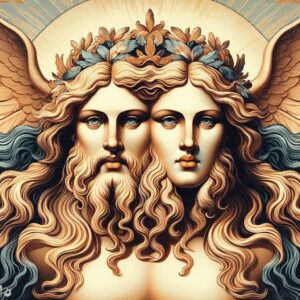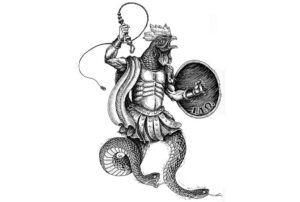Table of Contents
The Harpy, possessing the body of a bird and the face of a woman, exhibits swift flight and a stormy temperament. Additionally, depictions often associate these winged and vicious beings with winds. In Greek mythology, Harpies, enforcers of punishment, bear a name linked to “snatchers” or “swift robbers.”
Harpy Origins
In some versions of Greek mythology, both sea deities Thaumas and Electra begot the Harpies. The Strophades islands in the Ionian Sea frequently serve as their birthplace. The Harpies, characterized by bird-like features—wings, talons, and a woman’s face—stand out as distinctive mythological beings. Renowned for swift flight and a stormy temperament, they were sporadically depicted as agents of punishment. Executing the will of the gods, the Harpies’ actions varied in different myths, underscoring their complex nature.
In Greek folklore, their roles showcased a multifaceted aspect, contributing to their intriguing mythology. The Harpies’ enigmatic presence in tales adds depth and mystery to the rich tapestry of Greek mythological narratives. Legends surrounding their origin, birthplace, and deeds make the Harpies fascinating and enduring figures in the intricate web of ancient Greek stories. The Strophades islands, where their existence is intertwined, serve as a poignant backdrop for the unfolding drama of these mythical creatures. The Harpies’ symbolic blend of bird and woman, coupled with their role as divine enforcers, contributes to the enduring allure of these beings within the realm of Greek mythology.
Harpy Appearance
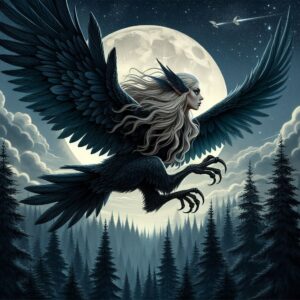
Harpies, present in diverse cultures and mythologies, exhibit varying appearances, sharing both bird-like and human-like traits. With wings, talons, and feathers resembling birds of prey, harpies possess powerful wings enabling them to soar gracefully. Their head and upper body often mirror a woman’s face, occasionally extending to arms and torso. Sharp claws or talons further characterize them, evoking the formidable aspect of birds of prey. The presence of feathers covering their bodies, akin to birds, showcases a spectrum of colors dependent on artistic interpretation. Some portrayals accentuate harpies as menacing or grotesque, underscoring their role as mythical monsters. Variations abound, with different cultures emphasizing either bird-like or human-like features in their depictions. This diversity in harpy representations across cultures enriches the mythological landscape, offering unique perspectives on these intriguing creatures. Consequently, harpies, with their composite features, continue to captivate audiences worldwide, their mythological presence bridging cultural narratives and artistic interpretations.
Harpy Special Powers
Harpies, unlike some mythical creatures, lack a specific set of magical powers. Instead, they often exhibit certain characteristics and abilities that contribute to their mythical nature. Harpies, renowned for swift and agile flight, are powerful flyers, soaring through the air with their bird-like wings.
In some myths, harpies possess enchanting voices and songs, using these melodies to lure and captivate prey, especially sailors or individuals in their vicinity.
Harpies, at times, act as agents of divine retribution, punishing wrongdoers for their actions and carrying out the will of the gods by meting out punishments. Notably, harpies showcase a tendency for thievery, often snatching away items, particularly food, emphasizing their mischievous nature. While not universally present, some variations of harpies in folklore are said to have the ability to shape-shift, adapting to different forms as the situation demands. These diverse features contribute to the multifaceted nature of harpies in mythology, making them intriguing and enigmatic creatures within the realm of ancient tales.
Myths
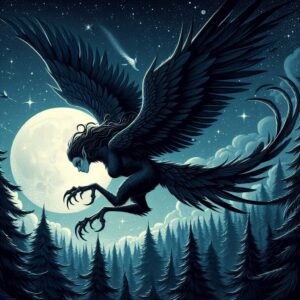
Argonautica (by Apollonius Rhodius):
Harpies are mentioned in the Argonautica, an epic poem written by Apollonius Rhodius in the 3rd century BCE. The Argonauts, led by Jason, encounter the harpies, specifically Aello and Ocypete, during their quest for the Golden Fleece. The harpies torment the blind seer Phineas, stealing his food and fouling what remains. The Argonauts eventually drive the harpies away with the help of the winged sons of Boreas, the North Wind.
Aeneid (by Virgil):
While Virgil was a Roman poet, not Greek, his epic poem, the Aeneid, features the harpies prominently in a Greek mythological context. In Book III, Aeneas and his companions land on the Strophades, where the harpies, led by Celaeno, curse them and predict a series of hardships for the Trojans. The Trojans are only able to escape the curse after they receive a prophecy from the gods.
The Odyssey (by Homer):
In Homer’s epic poem “The Odyssey,” harpies are briefly mentioned. Odysseus and his men encounter the harpies on the island of the Cattle of the Sun (Thrinacia). The harpies steal the food of the men and prophesy their hardships. The seer Calchas had previously predicted this encounter in the Trojan War.
Bibliotheca (by Apollodorus):
Apollodorus, in his work “Bibliotheca,” mentions the harpies as daughters of Thaumas and Electra. They are described as storm-winds, and Aello, Ocypete, and Celaeno are named as the harpies who tormented Phineas.
Phineas and the Harpies (Various Sources):
Theocritus’ Idylls:
The Hellenistic poet Theocritus penned about harpies in one of his Idylls. In this work, he mentions the harpies as creatures who steal away the daughters of Pandareus. The poet actively invokes the Muses to assist him in telling the story.
Similarities
Various cultures around the world have mythological creatures that share similarities with harpies, either in appearance or abilities. Here are a few examples:
Sirens (Greek Mythology):
Although not identical to harpies, sirens in Greek mythology often feature in depictions as bird-like creatures with the heads of women. Similar to harpies, sirens are linked to luring sailors to their doom through their enchanting songs.
Tengu (Japanese Folklore):
Tengu are creatures from Japanese folklore with both bird-like and human-like characteristics. They are often depicted with beaks or long noses and are associated with the mountains. Tengu can be mischievous or malevolent, and some stories portray them as harbingers of war or chaos.
Lamia (Various Mythologies):
Lamia, a creature found in various mythologies, including Greek and Roman, is often depicted as a female with the lower body of a serpent or, at times, a bird. Some versions associate Lamia with the acts of devouring children or seducing men.
Harpiai (Etruscan Mythology):
The Etruscans, an ancient civilization in Italy, had a mythological creature called the Harpia, which shares similarities with the Greek harpies. These creatures were often depicted as bird-women associated with death.
Garuda (Hindu and Buddhist Mythology):
In Hindu and Buddhist mythology, a mythical bird or bird-like creature named Garuda exists. Depictions show Garuda with a human body, wings, and the beak or face of an eagle. Garuda holds significance and is linked to the god Vishnu.
Chaneques (Mexican Folklore):
In Mexican folklore, mythical beings known as Chaneques possess the ability to shape-shift. Descriptions portray them as small creatures with wings and mischievous behavior, resembling the concept of harpies.
Stymphalian Birds (Greek Mythology):
Unlike harpies, the Stymphalian Birds in Greek mythology emerge as perilous creatures with metallic feathers and sharp beaks. Heracles slew them as part of his labors, linking them to the Stymphalian Lake.
Harpy FAQ
Where do harpies come from?
Harpies originate from Greek mythology. They are mentioned in various ancient texts and stories.
What are the typical characteristics of harpies?
Harpies are known for their bird-like features, including wings, talons, and feathers. They often have a woman's face, combining elements of both human and avian anatomy.
What is the significance of harpies in mythology?
Harpies are often associated with winds, punishment, and the execution of divine will. In some myths, they are depicted as agents of retribution.
Are harpies dangerous?
es, harpies are often portrayed as menacing and vicious beings. In some myths, they are linked to the torment of individuals, such as stealing food or causing harm.
Do harpies have specific roles in mythology?
Yes, harpies are sometimes described as punishers of wrongdoers. Their actions and roles, however, can vary in different myths, showcasing their complex and multifaceted nature.
Are there variations of harpies in different cultures?
While the concept of harpies originated in Greek mythology, similar bird-like creatures exist in various cultures, each with its own unique characteristics and stories.
Can harpies communicate?
In some myths, harpies are associated with enchanting songs used to lure sailors or individuals. Their communication methods may vary across different stories.
Are harpies immortal?
The immortality of harpies is not consistent across myths. In some tales, they are immortal, while in others, they may be subject to mortality or divine intervention.
